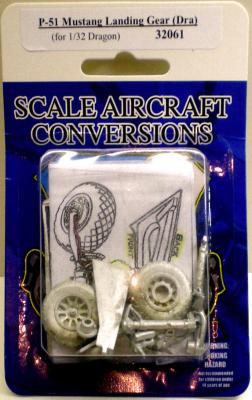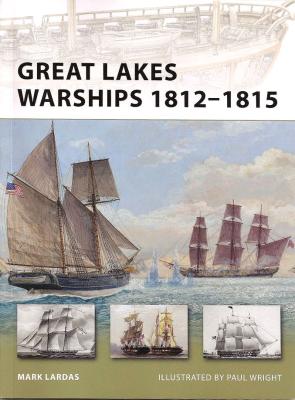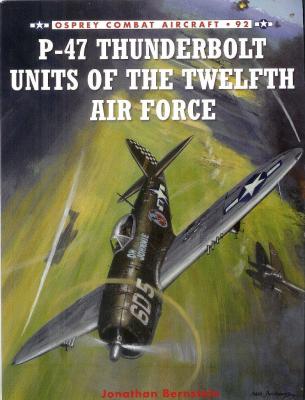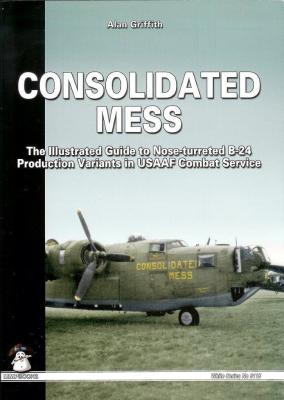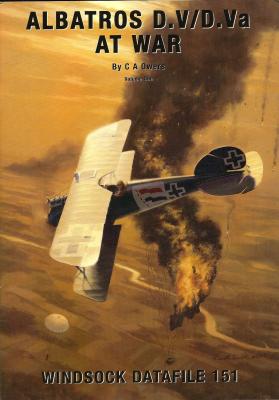Scale Aircraft Conversion provides an excellent landing gear conversion upgrade for the 1/32 Dragon P-51D Mustang. The conversion kit consists of 12 very nicely cast white metal main gear, doors, wheel/tire combination, hydraulic lines, and tail wheel assembly. The set also contains a very basic assembly diagram. All of the parts are very well cast and appear to be accurate. The white metal hydraulic lines may be difficult to clean up and attach to the main gear.
Welcome to the IPMS/USA Reviews site!
Introduction: The primary organization of the IPMS/USA Review website is by IPMS/USA National Contest Class. Within each Class there are sub-menus by kits, decals, books, etc. The Miscellaneous Class is for items that are not class specific or that cross two or more classes.
IPMS/USA Members: We encourage you to submit reviews, both here and to the Journal. To volunteer for membership in the IPMS/USA "Reviewers Corps" and submit your own reviews, please read the Guidelines For Submitting Product Reviews.
Manufacturers, publishers, and other industry members: IPMS/USA is pleased to offer your company the opportunity for product reviews. All product reviews are performed by IPMS/USA members, and are posted in the publicly-accessible section of our website. With very few exceptions, we perform full build reviews of new kit releases, aftermarket products, and supplies. If you would care to provide product samples for review, please contact John Noack, IPMS/USA 1st VP.
To learn more about IPMS/USA, please see our About Us page.
History
The War of 1812, in the reviewer’s opinion one of the least necessary wars we have ever fought, was in essence the finale of the American Revolution. Its end led to an era of cooperation between the United States and Britain that continues to this day. However, in 1812, both sides were serious adversaries, and American attempts to conquer Canada were countered by British efforts to attack the East Coast and take New Orleans. The Great Lakes were a boundary between the two countries and, although a few ships existed in those waters, it was the war that spurred a shipbuilding boom that lasted throughout the conflict.
Osprey’s newest volume in their “Combat Aircraft” series, Number 92, covers P-47s of the Twelfth Air Force. The book is in the standard Osprey format – softcover, chronological text (with lots of accompanying photos), and several pages of nicely done color profiles.
This is probably one of the best, and most descriptive, titles for a modeling/aircraft reference book I have seen. To quote the author: “The B-24 went through more turret changes than any American combat aircraft before or since.” This books attempts (quite successfully) to guide the reader through these various changes on all of the turret-nosed B-24 models.
There was an absolutely dizzying combination of nose turrets, tail turrets, waist guns, belly turrets and guns, and other modifications/design changes made to the B-24. The book goes into great detail of each step in the process, and the author makes every attempt to explain the differences clearly for each new piece of this puzzle. Crystal-clear photos (unless the only one available is less than clear), many previously unpublished, as well as a huge number of line drawings (with differences highlighted in red) accompany a very clear descriptions.
History
The Albatros D-series fighters appeared early in 1916 and went through several stages before the “V” strutted D.V’s were placed into service. While influenced by the French Nieuports, the only problem with these aircraft was the structural integrity of the wing, which tended to fail under extreme loads. This must have caused its pilots much concern, as they knew that the whole wing structure could fail under heavy stress loads. Later, most surviving pilots were happy to convert to the newer Fokker D.VII, although Albatros fighters remained in the inventory of the Imperial German Air Service until the end of hostilities in 1918, mostly serving in second-line units. Von Richtofen flew the type until he could get his hands on the Fokker Dr.1.











